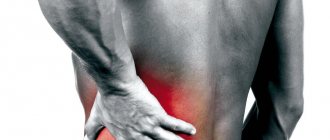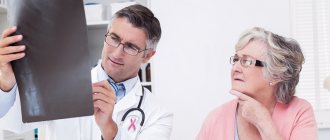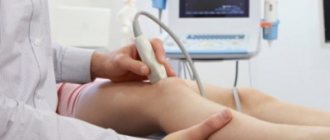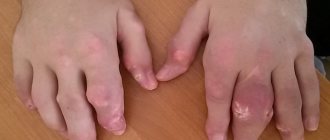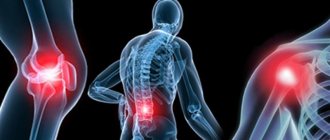August 29, 2019
6496
0
3.3 out of 5
Back pain is a common phenomenon that every person encounters at certain intervals. Increased physical activity, hypothermia, pregnancy, prolonged sitting at the computer, work associated with constant standing and a bunch of other reasons can provoke back discomfort.
But they are not always so harmless. Often the listed factors are only an impetus for the manifestation of symptoms of diseases of the spine, and sometimes other organs. Therefore, you should not try to deal with pain in the lower back or other area on your own. There are specialists who have thoroughly studied the causes of back pain and know how to deal with them correctly. You will find them at SL Clinic.
Who to contact for back pain
In the vast majority of cases, back discomfort is a sign of diseases of the spine and surrounding structures. Therefore, first of all you should contact:
- vertebrologist;
- spinal surgeon;
- rheumatologist;
- orthopedist-traumatologist;
- neurologist.
All these specialties overlap with each other and are partially interchangeable. Therefore, the same disease can be successfully diagnosed and treated, for example, by a rheumatologist and a vertebrologist or a vertebrologist and a neurologist.
Vertebrologist
This is a fairly broad specialist who is involved in the diagnosis and treatment of diseases of the spine and related organs and tissues, including spinal stenosis, osteochondrosis, spondylolisthesis, scoliosis, radiculitis, etc.
Consulting a doctor of this specialty will be the best option if pain occurs for the first time. It is he who will be able to thoroughly understand the situation and determine its character. You should also make an appointment with a vertebrologist if:
- regular back pain;
- limited mobility;
- discomfort while walking;
- shooting in the legs;
- feeling of pressure on the sides;
- tremors in the limbs
- weakness in arms and legs, etc.
Rheumatologist
This is a doctor whose field of activity includes the diagnosis and treatment of diseases of the joints and connective tissue. Therefore, his consultation is necessary if gout, rheumatoid arthritis, ankylosing spondylitis, rheumatism, or vasculitis are suspected or previously diagnosed.
The help of a rheumatologist is needed for:
- the occurrence of stiffness in the joints in the morning after sleep and its gradual disappearance after the start of movement;
- swelling in the projection of the joint, intervertebral disc;
- discomfort in one point, increasing after physical activity;
- weakness in the limbs.
Orthopedist-traumatologist
A specialist who treats the consequences of injuries, congenital pathologies and acquired spinal deformities. His consultation will be useful for:
- the appearance of pain after a blow or other traumatic factor;
- lack of feeling of complete recovery after injury;
- poor posture;
- fatigue;
- changes in the normal contours of the back, the appearance of previously absent bulges or depressions, etc.
Neurologist
Previously called a neurologist, this doctor specializes in the diagnosis and treatment of diseases of the nervous system. He is able to accurately determine the source of pain, detect any damage to nerve endings, ranging from inflammatory processes to compression by other structures.
By consulting a neurologist, you can begin to search for the cause of back discomfort. It’s also worth making an appointment with him if this is complemented by:
- frequent headaches;
- migraines;
- dizziness;
- loss of consciousness;
- violation of movement coordination;
- muscle weakness;
- speech disorders.
Thanks to the help of a neurologist for long-term, debilitating back pain, it is possible to prevent the formation of a painful focus in the brain and the resulting complications.
Of course, you can always consult a therapist. But this will only be a waste of time and effort. Based on the patient’s complaints, the therapist will only be able to refer him to a more specialized specialist - one of those listed above. Therefore, a visit to a therapist is only justified if it is absolutely unclear which doctor you should go to and you need to collect an anamnesis. It’s better to immediately do an MRI, and then all doubts will be dispelled, and it will become obvious which doctor’s consultation is needed.
Doctors of related fields
Back pain is not always a sign of problems occurring specifically in the spine or muscles. Sometimes the reason lies in the disruption of other organs that have nothing to do with the back. Therefore, if a rheumatologist or orthopedist does not find serious abnormalities, the patient is recommended to consult other specialists.
Due to the peculiarities of the innervation of internal organs, disturbances in their work, inflammatory processes and other factors can lead to pain not only in the lesion, but also along the nerves innervating them. Therefore, in certain cases, pathologies of the genitourinary and digestive systems lead to back discomfort.
To detect them and select the correct treatment tactics, consultations are required:
- gynecologist - a female doctor can detect endometriosis, fibroids, inflammatory and other diseases of the genital organs, in which pain often tends to radiate to the lower back;
- urologist – diagnoses and treats not only diseases of the male reproductive system, but also disorders of the kidneys and bladder in representatives of both sexes (urolithiasis is often accompanied by severe pain in the lower back);
- gastroenterologist - will be able to diagnose diseases of the gastrointestinal tract that cause back pain;
- a cardiologist - a consultation will help to accurately determine whether back discomfort is caused by heart problems, since they very often manifest themselves in this way;
- an endocrinologist - will help detect metabolic disorders and resulting osteoporosis.
What to take with you to your appointment
In order for the consultation to be as informative as possible for the patient, the doctor must provide all available medical documents, especially those related to chronic diseases. You should also take with you (if you have):
- test results;
- x-rays;
- extracts from the medical history during surgical treatment, injuries;
- results of MRI, CT, ultrasound.
This will allow the doctor to initially understand the essence of the problem in more detail and immediately select initial therapy. Its character can be adjusted and refined in the future. Also, to get a complete picture, the doctor may recommend other diagnostic methods.
Diagnostics
To determine an accurate diagnosis, you may need to undergo the following tests:
- radiography – obtaining an overview image;
- pneumomyelography is a radiology method based on the injection of a coloring liquid into the spinal canal after a spinal puncture;
- angiography is a study involving the introduction of contrast into an artery: carotid or vertebral;
- myelography - fluid is injected into the subarachnoid spinal canal;
- discography – study of a specific disc using contrast fluid;
- spiral CT;
- MRI;
- Doppler ultrasound – a study to determine the degree of patency of a large artery located in the spine;
- Electromyography – study of peripheral nerves.
Methods for diagnosing the causes of back pain
To accurately determine the cause of discomfort, depending on the characteristics of the clinical picture, the doctor prescribes a set of diagnostic tests, which may include:
- MRI is the main method for diagnosing spinal diseases, so it is usually one of the first prescribed to patients;
- X-ray – used to assess the condition of bones;
- Ultrasound – will allow you to visualize the structure and structure of internal organs and joints;
- CT scan – provides comprehensive data on the condition of bone tissue;
- OAC – allows you to detect signs of inflammatory processes;
- biochemical blood test - shows the presence of markers typical for a particular disease.
Based on the results obtained, one can not only judge the nature of the pain that occurs, but also the need for emergency surgical care for the patient. After all, some diseases have a poor clinical picture, but at the same time pose a serious threat to human life, for example, cancer.
Symptoms
The clinical picture for diseases of the spine is of two types:
- Vertebral. Pathological processes develop in the tissues and components of the spine itself.
- Extravertebral. Processes develop in nearby tissues.
The most common signs of back and spinal column diseases:
- pain (focused at the site of the lesion, varies in intensity);
- inability to fully move;
- curvature of posture;
- ruptures in bone tissue;
- numbness of the skin of the back and limbs.
Indirect signs:
- dysfunction of the pelvic organs, respiratory and cardiovascular systems;
- dizziness and weakness;
- digestive system dysfunction;
- sleep disturbances;
- loss of consciousness.
When a doctor's consultation is needed urgently
In some cases, if you have back pain, you should not hesitate to seek medical help. This is about:
- chronic pain;
- lumbago;
- regular occurrence of pain after physical activity;
- persistence of discomfort without improvement for 3–5 days;
- lack of relief at rest;
- a feeling of numbness in the arms, legs or face;
- irradiation of pain in the legs, buttocks, thighs, perineum;
- the presence of pressing pain inside;
- fever;
- breathing problems;
- chest pain;
- limited mobility.
These symptoms may be signs of serious problems that require immediate attention.
Why is it important not to self-medicate?
Since in the vast majority of cases the causes of discomfort lie in diseases of the spine, the use of topical agents with an analgesic effect temporarily muffles their symptoms and gives the patient a false sense of normalization of the condition. This approach is fraught with the development of complications, because discomfort is most often a consequence of:
- Osteochondrosis is a dystrophic-degenerative disease in which intervertebral discs are gradually destroyed. This leads to the formation of protrusions and hernias, as well as a number of other complications.
- Intervertebral herniation - pathological protrusion of the intervertebral disc can pose a serious threat, especially if it is sequestered. Since the neoplasm puts pressure on surrounding tissues, which may include nerve roots, blood vessels, and the spinal canal, severe pain occurs. With prolonged non-intervention, a stroke may develop as a result of severe disruption of the blood supply to the brain.
- Scoliosis is a disease most often diagnosed in childhood. Over the years, it can progress and provoke displacement of internal organs and disruption of their functioning. The heart and lungs are most often affected. In advanced cases, the patient can only be helped by surgery.
Spondylosis, spondyloarthrosis and other pathologies that can lead to disability manifest themselves in a similar way.
The only case when moderate, aching back pain can be considered physiological is pregnancy. But even in this case, after giving birth you should play it safe and visit a specialist. After all, a strong increase in the load on the spine and its prolonged persistence can give rise to the development of pathological changes in its cartilage, that is, provoke the development of osteochondrosis, protrusions and hernias.
If these abnormalities are diagnosed in the early stages, they can be quickly managed through conservative therapy. If you start the disease and suppress its manifestations with painkillers, irreversible changes or the development of conditions are possible in which only surgical intervention can improve and eliminate the threat to health or even life.
Kinds
There are 3 main types of scoliosis:
- functional;
- structural;
- idiopathic.
Functional
With functional curvature, there is no torsion or other changes in the structure of the vertebrae. The spine is fully straightened when the torso is tilted and in a lying position. This condition is reversible and can be corrected by performing therapeutic exercises aimed at strengthening the back muscles.
Structural
The structural type is characterized by the presence of typical changes and is often a congenital pathology. A scoliotic arch is formed by vertebrae with a wedge-shaped deformity or twisted bodies. Structural changes can also be a consequence of injuries, neurological and endocrine diseases. Their appearance is promoted by various metabolic disorders, muscular dystrophy, myopathy, poliomyelitis, neurofibromatosis, etc.
Idiopathic
This is the most common form, diagnosed mainly in 10-12 year old children, mostly girls. There are many different theories regarding its occurrence, but they all agree on one thing - the curvature is caused by a violation of the development of vertebral tissues during the period of active growth.
Important! The diagnosis of idiopathic scoliosis is made only after excluding other causes.
Scoliosis is classified according to location into the following types:
- cervicothoracic with the apex of curvature in the region of the 3rd–4th thoracic vertebrae;
- thoracic (apex – 8–9 vertebra);
- thoracolumbar (11–12 vertebrae – peak of the arc);
- lumbar.
Treatment of back pain
After accurately determining the cause that provokes discomfort, the doctor initially prescribes conservative therapy. Usually it is complex in nature and includes taking a number of individually selected medications from the following:
- NSAIDs;
- corticosteroids;
- muscle relaxants;
- antidepressants;
- products for topical use.
In case of severe pain, a blockade can be performed in a clinical setting. The essence of the procedure is the introduction of anesthetic solutions at certain points. This allows you to block the transmission of pain impulses and leads to normalization of the condition in 2–5 minutes.
In order to increase the effectiveness of drug therapy, patients are additionally prescribed a course of physiotherapeutic procedures, manual therapy, exercise therapy and wearing orthopedic bandages. They help reduce the load on the spine, improve blood circulation, speed up regeneration processes and reduce pain.
In most cases, exercise therapy plays a significant role in treatment, so you should not neglect daily exercise. But only a specialist who knows the exact diagnosis can develop a set of exercises that will bring benefits and not harm. In some situations, exercise therapy is contraindicated. Therefore, you should not try to improve your condition with physical exercise on your own.
If severe pathologies are detected, in some cases, patients are urgently hospitalized for the purpose of careful medical monitoring of their condition or surgical intervention.
Treatment methods
Therapy for spinal diseases is conservative and includes:
- Drug treatment. The effect of prescribed drugs can be aimed at relieving attacks of acute pain, eliminating inflammatory processes, protecting and restoring cartilage and bone tissue.
- Physiotherapeutic procedures;
- Physical therapy;
- Traction therapy aimed at increasing the distance between the vertebrae using special devices;
- Massage;
- Treatment in specialized sanatoriums;
- A therapeutic diet.
If the prescribed course of treatment does not produce results, surgery may be necessary, during which the following will be performed:
- restoration of connective ligaments;
- replacement of destroyed or deformed vertebrae, joints and discs with implants;
- stem cell therapy;
- cartilage tissue transplantation;
- removal of intervertebral hernia;
- restoration of fractures, connection of fragments.
The sooner you consult a specialist, the greater the chances of restoring your spine and returning to a full life.
Consultations with a doctor online Taking care of your health is a life priority for everyone.
Communicate with doctors online and receive qualified assistance without leaving your home. Try it Please note! The information on this page is provided for informational purposes only. To prescribe treatment, you must consult a doctor.
Surgical treatment for back pain
If conservative therapy is ineffective or a number of abnormalities are detected, patients may be recommended surgery. Surgical treatment is indicated for:
- increasing herniation of intervertebral discs and compression of the spinal canal, nerve roots, etc.;
- sequestered hernias;
- spinal fractures;
- spinal canal stenosis;
- hemangiomas;
- instability of the spinal motion segment of the spine;
- severe forms of spondyloarthrosis;
- cauda equina syndrome;
- scoliosis grade 3–4;
- neoplasms;
- disruption of the pelvic organs and other cases.
Performing the operation is the task of the spinal surgeon. This specialist knows methods of surgical treatment of a wide variety of diseases of the spine and brain. It can eliminate deformations, compression of nerve roots, blood vessels, eliminate congenital anomalies and neoplasms of any nature.
Classification
Spinal diseases primarily affect the nervous system. Neurological pathologies are divided based on the reasons that provoked them:
- congenital anomalies affecting the number and relative position of the vertebrae;
- dystrophy, metabolic type lesions (osteochondrosis, spondylosis);
- damage resulting from trauma;
- oncology (malignant and benign neoplasms);
- inflammation caused by viruses, bacteria and parasites (syphilitic and tuberculous spondylitis, mycosis, ankylosing spondylitis).
There is a classification of diseases according to the area affected.
The following syndromes are characteristic of the cervical and thoracic spine:
- reflex;
- muscular-tonic;
- neurodystrophic;
- radicular.
Among the diseases of the lumbar region are:
- lumbago;
- coccydynia;
- osteoporosis;
- fibromyalgia;
- spinal cord canal stenosis.
Surgery for back pain
In the arsenal of spinal surgeons there is a huge variety of different techniques, the use of which can eliminate almost any disorder. Operations can be performed via a posterior approach (from the back), lateral (used for neck operations) and anterior (access to the spine is provided by entering it through the abdominal cavity).
For each patient, the type of access and surgical technique are selected individually. It can be:
- Discectomy is a surgical intervention on the intervertebral disc, which involves removing the hernia or the entire disc in an open manner, through a small incision (microdiscectomy) or endoscopically. Thanks to it, the pressure of pathologically altered cartilage on the nerves is eliminated, which leads to the elimination of pain and impaired mobility.
- Percutaneous methods for treating intervertebral protrusions - surgeons are able to reduce the size of pathological protrusion only by inserting a thin needle into the affected intervertebral disc. Through it, a light guide or a special electrode is immersed into the thickness of the nucleus pulposus. They create thermal energy or a cloud of cold plasma, which leads to sclerosis of part of the nucleus pulposus and a decrease in the size of the disc. These methods include cold plasma, laser and radiofrequency nucleoplasty.
- Laminectomy - removal of part of the vertebra and its arch above the spinal root. The method allows you to increase the free space around the nerve, which will lead to an improvement in its blood supply, elimination of swelling of the perineural membrane and, as a consequence, a decrease in compression.
- Spondylodesis is a method that involves removing the intervertebral disc and connecting the vertebrae of the affected segment to each other, as a result of which they are completely fused. This leads to stabilization of the spinal motion segment, eliminates pathological mobility of the vertebrae and prevents injuries.
- Vertebroplasty is a minimally invasive method of treating compression fractures, hemangiomas and some other tumors, osteoporosis of the spine, which involves filling the defect with bone cement. It is injected into the desired area using a thin needle. The procedure can be performed under local anesthesia and has a short recovery period.
- Endoprosthetics of the intervertebral disc - in case of severe destruction of cartilage tissue, it is possible to replace the discs with artificial implants. They have good biomechanical properties and can withstand heavy loads.
- Operations to correct curvatures (deformations) of the spine - in case of scoliosis, metal structures are used to straighten the spinal column. They come in different types and require different installation methods. Metal structures are installed along the entire scoliotic arch and allow significant alignment of the spine to be achieved.
The cost of such operations varies widely. The highest prices are for microsurgical interventions and operations involving the installation of implants or expensive fixation structures.
“SL Clinic” is your chance to get rid of back pain
Back pain can be a sign of serious diseases that require complex treatment to avoid complications, disability, and death. Therefore, when they appear, you should immediately contact a vertebrologist, neurologist, rheumatologist or orthopedist-traumatologist. The best specialists in these specialties accept patients at the SL Clinic.
Our clinic specializes in the treatment of spinal diseases, neurological disorders and a number of other pathologies. With us you can not only get advice from highly qualified doctors, but also quickly undergo all the diagnostic measures necessary in a particular case using the latest generation equipment. We will be able to accurately determine the cause of pain and select the optimal treatment tactics, which will ensure the onset of improvement and the achievement of stable remission.
If indicated, you can get help from professional spinal surgeons in the best clinics in the capital. Our surgeons have extensive practical experience, regularly improve their skills and master advanced techniques for providing surgical care to patients with various diagnoses.
The SL Clinic performs all types of percutaneous and endoscopic spine surgeries. If necessary, surgeons can perform open surgical interventions, correct spinal deformities, and perform operations of any complexity using modern implants.
We will provide you with the most comfortable treatment conditions at affordable prices. Contact the SL Clinic, follow the recommendations of specialists, and you will forget about back pain and limited mobility.
